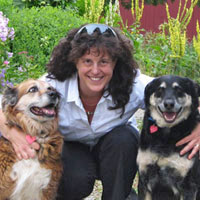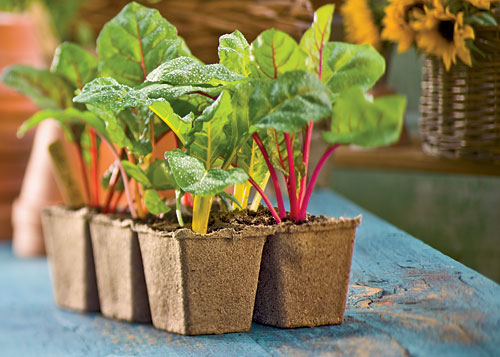






I've been gardening and writing about gardening for more than 20 years, yet I find I'm always learning new things about the plants, insects and other critters that call my backyard home. That's the great thing about gardening — it's never boring! I've worked as a landscaper, on an organic farm, as a research technician in a plant pathology lab and ran a small cut-flower business, all of which inform my garden writing. A few years ago my husband and I purchased a beautiful old Victorian house and opened a pet-friendly B&B; I've spent the last few summers renovating garden beds and adding new ones. My husband once asked me when I'll be finished, to which I replied, "Never!" For me, gardening is a process, not a goal.

When seedlings are ready to be planted in the garden, the Cowpot goes right into the ground with the plant, reducing transplant shock.
I worked for a summer on a dairy farm so I can attest to the fact that a cow produces a lot of manure. Matt and Ben Freund, the two Connecticut dairy farmers who invented biodegradable Cowpots™, estimate that a cow produces about 120 pounds of manure per day. And disposing of that manure is a big issue. Although manure makes a nutrient-rich fertilizer for hayfields and cornfields, spreading fresh manure also risks polluting surrounding waterways. So what's a farmer to do?
The Freunds came up with the idea of making plant pots out of manure — and the rest is Cowpot history. The pots are molded out of dried manure using a manufacturing process that removes weeds and pathogens — and any trace of manure odor.
I've been starting plants from seed for years and I find that lately I've been using more biodegradable pots for a few reasons:
I'm not sure why, but Cowpots seem easier on seedling roots than peat pots. They appear to degrade faster so plant roots can penetrate the pots' walls and venture out into the garden soil, so plants establish quickly. One side effect of the Cowpots' fast decomposition is that you sometimes see a bit of mold or algae on the side of the pot. Although unsightly, this won't harm the plants; it just indicates that the pot material is ready to decompose and offer up its nutrients to the seedlings.
So let's see: Cowpots are biodegradable, keeping plastic waste out of the landfill. And they're not only made from a renewable resource, they're taking a potential pollutant out of the waste stream. They're made in the U.S. by farmers, and they grow happy seedlings. What's not to love?
Copyright © www.100flowers.win Botanic Garden All Rights Reserved